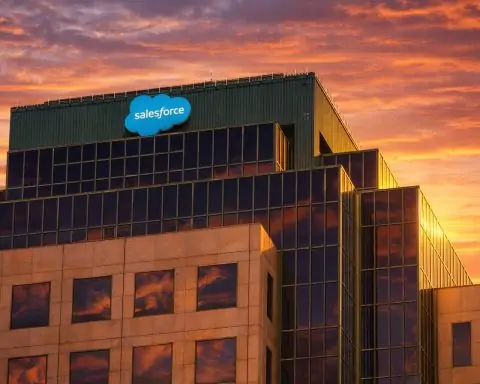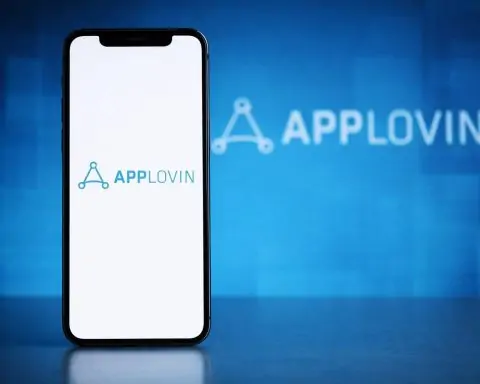- New All-Time High: Apple’s stock (AAPL) closed at $262.24 on October 20, 2025, up nearly 4% for the day – breaking its previous record high (set in late 2024) and pushing Apple’s market value close to $4 trillion [1].
- iPhone 17 Sales Surge: Early iPhone 17 sales are off to a strong start – first 10-day sales are about 14% higher than last year’s iPhone 16 launch in both the U.S. and China [2]. Analysts say this robust demand is fueling a long-awaited iPhone “supercycle” upgrade wave [3].
- Analysts Boost Targets: Riding the sales momentum, Loop Capital upgraded Apple to “Buy” and hiked its price target from $226 to $315 (implying ~25% upside) [4]. Evercore ISI likewise added Apple to its “Tactical Outperform” list amid the bullish data [5]. Longtime Apple bull Dan Ives of Wedbush even calls this a potential “golden era” for Apple, raising his target to $310 [6].
- Bears Urge Caution: Not everyone is optimistic – Jefferies recently downgraded AAPL to Underperform with a target near $205, arguing the stock already reflects “excessive expectations” for coming innovations [7]. In fact, the average Wall Street 12-month price target sits in the mid-$250s, suggesting only modest upside from current levels [8].
- Earnings on Deck: Apple reports earnings on October 30, and analysts expect roughly $101 billion in revenue and around $1.75 EPS for the quarter [9]. Investors will watch whether the iPhone 17 boom translates into strong holiday-quarter guidance, though macro risks – from U.S.–China trade tensions to regulatory scrutiny – could still pose volatility [10].
Apple Stock Hits Record High on iPhone Buzz
Apple’s share price surged to a record peak on Oct. 20 as investors piled in on upbeat news about the iPhone 17 launch. The stock jumped nearly 4%, closing around $262 – a new all-time high that eclipses the previous peak of $259 set last year [11]. In intraday trading, AAPL reached as high as ~$264, briefly valuing the company at about $3.9 trillion, the highest ever and putting Apple within striking distance of the unprecedented $4 trillion mark [12] [13]. This rally marked a sharp sentiment shift for Apple, which until recently had been lagging behind other tech giants in 2025. Even after this jump, Apple’s stock is only up roughly 5% year-to-date, far behind high-fliers like Nvidia (+35% YTD) or Microsoft (+23%) that have ridden 2025’s AI stock boom [14]. The late-year surge has helped Apple narrow that gap, with its shares gaining about 22% over the past three months alone – outpacing the S&P 500’s ~11% gain in the same period [15].
What’s driving the breakout? A powerful mix of booming iPhone sales and positive analyst signals ignited Monday’s rally. New data from research firm Counterpoint revealed that Apple’s latest iPhone 17 series is outselling last year’s iPhone 16 by ~14% in the first ten days after launch across the U.S. and China [16]. This hints at a much stronger upgrade cycle than the market expected. Demand appears especially brisk for the base iPhone 17 model – which offers improved performance and cameras at last year’s prices – and for the new mid-tier “iPhone 17 Air,” which reportedly sold out within minutes of its debut in China [17]. In fact, Apple was the only major smartphone brand to grow unit shipments in China last quarter, as its value-priced iPhone 17 base model successfully captured cost-conscious customers [18]. That kind of sales momentum has fueled talk of an Apple “supercycle” – a long-awaited wave of upgrades as hundreds of millions of users replace aging iPhones [19].
Meanwhile, Wall Street bullishness amplified the rally. On Monday, Loop Capital analysts delivered a high-profile upgrade, boosting Apple’s rating to Buy from Hold and unveiling a $315 price target – one of the most aggressive on the Street [20]. Loop’s call came with a bold thesis: the iPhone 17’s performance is so strong that it may drive “material upside to expectations through 2027,” indicating this upgrade cycle could lift Apple’s results for years [21]. Evercore ISI also jumped in, adding Apple to its tactical outperform list and predicting Apple will beat its September-quarter earnings forecasts on the back of iPhone strength [22]. This bullish chorus lent credibility to the idea that Apple’s current momentum is not just a one-quarter blip, but potentially the start of a sustained run.
It wasn’t only iPhones stirring optimism. Last week (Oct. 15), Apple quietly launched new products – including updated MacBook Pro and iPad Pro models, plus a second-generation Vision Pro AR headset – all powered by its advanced new 3nm “M5” chip [23]. The M5 delivers significant performance gains (about 15% faster CPU and 4× the AI processing capability of the prior generation) enabling features like on-device generative AI [24]. Notably, Apple held prices steady on these upgraded devices despite higher specs [25], an unusual move in an inflationary climate. This suggests Apple is aggressively trying to broaden its user base (especially for emerging products like AR wearables) rather than simply maximize margins. The market viewed these product moves – and Apple’s ability to boost AI capabilities across its lineup – as further evidence that the company is well-positioned in the tech landscape heading into 2026.
Broader market factors also provided a tailwind. Tech stocks rallied broadly on Oct. 20 amid hopes that a weeks-long U.S. government shutdown impasse could finally end and that the Federal Reserve may soon cut interest rates to support the economy [26] [27]. Easing fears of an escalating U.S.–China trade war helped as well, after recent tariff threats had rattled markets earlier in the month [28]. Apple, with its huge weight in indexes, led the charge – its nearly 4% jump contributed to a 500-point gain in the Dow Jones Industrial Average and a >1% pop in the Nasdaq on Monday [29]. In short, investors were in a buying mood, and Apple had the catalysts to stand out even in a green market.
Bulls Cheer “Supercycle” Potential, But Skeptics Note Risks
With Apple’s share price back at record levels, analysts are starkly divided on how much higher it can go. Optimists see the makings of a major upswing driven by Apple’s product cycle and ecosystem strength. Foremost among the bulls is Wedbush Securities’ Dan Ives, who recently proclaimed that Apple is entering a “golden era” of growth [30]. Ives – a well-known Apple uber-bull – argues that a massive base of older iPhones is finally upgrading, and that Apple’s expansion in services (and possibly new categories like mixed-reality headsets) will unlock significant revenue streams [31]. He raised his 12-month price target to $310 per share, one of the highest on Wall Street [32]. Loop Capital’s call on Monday echoed that enthusiasm, with analyst Ananda Baruah citing “significant upside potential” in the iPhone 17 cycle and beyond [33]. Baruah notes that strong uptake of premium models – the big-screen iPhone 17 Pro Max reportedly makes up an outsized chunk of sales – shows Apple’s ability to drive consumers to higher-priced devices, boosting its average selling price and margins [34]. Evercore ISI likewise sees Apple as poised to outperform, maintaining an Outperform rating and a ~$290 target as they expect Apple to beat earnings estimates and perhaps raise guidance on robust iPhone demand [35] [36].
However, not everyone is buying the hype. A contingent of analysts warns that Apple’s valuation already reflects a lot of good news – leaving little room for error. Brokerage Jefferies made waves by downgrading Apple to Underperform (essentially a Sell) even as shares were climbing near all-time highs [37]. Jefferies’ analysts argue that “lofty expectations” for the iPhone 17 cycle, the upcoming Vision Pro headset, and other initiatives are largely “already baked into” Apple’s $3+ trillion valuation [38]. In their view, the recent rally could be fragile if those new products don’t significantly exceed what’s assumed. Their price target is in the low $200s – meaning they see potential downside ahead [39]. Many other analysts remain more neutral. The consensus 12-month price target for AAPL sits only in the mid-$250s [40], roughly where the stock traded just a week or two ago. In fact, according to Bloomberg data, Apple’s average target (around $248) is below the current price [41] – a sign that, on paper at least, Wall Street as a whole isn’t projecting huge further gains from here absent new catalysts.
One reason for caution is valuation. After this run-up, Apple now trades at approximately 40× its earnings (P/E ratio), which is well above its five-year average (~28×) and far higher than many other hardware-focused tech peers [42]. For example, Apple’s P/E is nearly triple that of Samsung Electronics – a reminder that investors are assigning Apple a hefty premium. This rich valuation “requires sustained earnings growth to justify” [43]. Bulls believe Apple can deliver that growth through a combination of iPhone upgrades, services revenue (App Store, subscriptions), and potential new product categories. But if growth even modestly disappoints, such a premium could lead to a sharp pullback. “The stock’s valuation is heavily reliant on sustained double-digit EPS growth through 2027,” one analysis noted, pointing out that Apple’s forward PEG ratio (price/earnings-to-growth) has stretched to very high levels [44] [45]. In simpler terms, Apple is priced for perfection – any hiccup in execution or demand could prompt investors to rethink paying such a high multiple for a $3–4 trillion company.
Outlook: Earnings, Catalysts and Challenges Ahead
All eyes now turn to Apple’s upcoming earnings report, due on October 30. This quarterly report (Apple’s fiscal Q4 of 2025) will give the first official look at how the iPhone 17 launch is translating into financial results. Wall Street expects big numbers – roughly $100–102 billion in revenue and earnings per share around $1.75 [46] – which would represent solid growth from the same quarter last year. Notably, Apple already delivered a blowout performance in the prior quarter (Q3), with $94 billion in revenue (+10% YoY) and expanding profit margins [47] [48]. It even raised its revenue outlook for the holiday quarter back in July [49], signaling confidence. If the company now reports that iPhone 17 demand has indeed boosted sales, and issues upbeat guidance for the all-important holiday period, it could reinforce the bulls’ case for further stock gains. As one market commentator put it, Apple has been “surprisingly resilient” even during recent market volatility [50] [51] – strong earnings momentum could add conviction that the stock’s climb is justified.
Beyond the numbers, investors will listen for cues on several strategic fronts. One topic likely to come up is China, which remains both a huge growth opportunity and a source of risk for Apple. Encouragingly, recent data show Apple fared well in China’s smartphone market despite economic headwinds – thanks to the iPhone 17, Apple was the only top vendor to grow shipments in China last quarter [52]. CEO Tim Cook has also been actively engaging with China, even visiting the country recently to underscore Apple’s commitment [53]. However, geopolitical tensions are a wild card: ongoing U.S.–China trade disputes (and related export restrictions) could impact Apple’s supply chain or demand if relations deteriorate [54]. Apple has navigated such crossfire before – for instance, tariff flare-ups earlier in October caused only a brief stock dip as Apple adeptly managed the situation [55] – but the company remains vulnerable to any major policy shifts between the two superpowers.
Another theme will be product strategy and innovation. Enthusiasm is high for the iPhone 17 cycle, but what comes next? Analysts will be looking for hints about future iPhones (the rumored iPhone 18 next year), the trajectory of the new Vision Pro AR headset, and Apple’s approach to artificial intelligence. This year, Apple’s AI efforts (branded “Apple Intelligence”) have been somewhat under the radar compared to peers, but reports suggest Apple is investing heavily in AI features for Siri and its devices [56]. Any commentary from Apple’s management on AI advancements or new products (for example, in wearables or health tech) could sway investor sentiment about longer-term growth drivers.
Importantly, Apple’s leadership and execution will be in focus as well. The company is in the midst of a gradual management transition at the top ranks. Longtime COO Jeff Williams – seen as a key operations guru – is set to retire at year-end, and Apple has been grooming replacements (operations VP Sabih Khan will take Williams’ role) [57]. There’s also ongoing chatter about who might eventually succeed CEO Tim Cook, though Cook remains firmly at the helm for now. Apple’s track record suggests these transitions are carefully planned to avoid disruption [58]. Still, investors will watch for reassurance that the Apple machine continues to run smoothly as new leaders step up, especially in hardware engineering and chip design where innovation is critical.
Finally, a note of caution: even as Apple’s near-term outlook appears bright, risks abound on the horizon. Besides geopolitical issues, regulatory scrutiny is an ever-present concern. Just recently, a consumer group in China filed an antitrust complaint alleging monopolistic App Store practices [59] – one of several such challenges Apple faces globally. In the U.S. and Europe, regulators have probed Apple’s dominance in areas from app distribution to mobile payments. While none of these issues have derailed Apple’s growth so far (and major fines have been absorbed as the cost of doing business), they add a layer of uncertainty that investors can’t ignore. Moreover, as Apple’s valuation soars, some are asking whether the company can keep up the pace of innovation needed to sustain its earnings growth. The coming quarters – starting with the Oct. 30 earnings – will be crucial in determining if Apple truly is on the cusp of the “supercycle” golden era that bulls envision, or if it will hit turbulence now that it’s priced near perfection.
Bottom Line: Apple’s stock is back in record-high territory, fueled by real evidence of strong iPhone 17 sales and a wave of optimism from analysts. The company is firing on multiple cylinders – new product launches, resilience in China, and an expanding services ecosystem – giving investors plenty of reasons to cheer. Yet with the stock nearly $260+ a share and Apple flirting with a $4 trillion valuation, the bar for continued upside is high. The next catalysts (earnings and holiday sales) will need to confirm that Apple can meet lofty expectations. For now, Apple has regained its place as a market leader in 2025’s final stretch, but whether this rally has more room to run will depend on Apple’s ability to deliver results and navigate the challenges ahead [60] [61].
References
1. appleinsider.com, 2. www.nasdaq.com, 3. ts2.tech, 4. www.nasdaq.com, 5. www.nasdaq.com, 6. ts2.tech, 7. ts2.tech, 8. ts2.tech, 9. ts2.tech, 10. ts2.tech, 11. appleinsider.com, 12. www.tradingnews.com, 13. www.tradingnews.com, 14. ts2.tech, 15. www.tradingnews.com, 16. www.nasdaq.com, 17. news.futunn.com, 18. www.reuters.com, 19. ts2.tech, 20. www.nasdaq.com, 21. www.tradingnews.com, 22. www.nasdaq.com, 23. ts2.tech, 24. ts2.tech, 25. ts2.tech, 26. www.tipranks.com, 27. www.tipranks.com, 28. www.tipranks.com, 29. www.tipranks.com, 30. ts2.tech, 31. ts2.tech, 32. ts2.tech, 33. news.futunn.com, 34. www.tradingnews.com, 35. news.futunn.com, 36. news.futunn.com, 37. ts2.tech, 38. ts2.tech, 39. ts2.tech, 40. ts2.tech, 41. www.tradingnews.com, 42. www.tradingnews.com, 43. www.tradingnews.com, 44. www.tradingnews.com, 45. www.tradingnews.com, 46. ts2.tech, 47. ts2.tech, 48. ts2.tech, 49. ts2.tech, 50. ts2.tech, 51. ts2.tech, 52. www.reuters.com, 53. www.nasdaq.com, 54. ts2.tech, 55. ts2.tech, 56. appleinsider.com, 57. ts2.tech, 58. ts2.tech, 59. ts2.tech, 60. www.tradingnews.com, 61. ts2.tech










